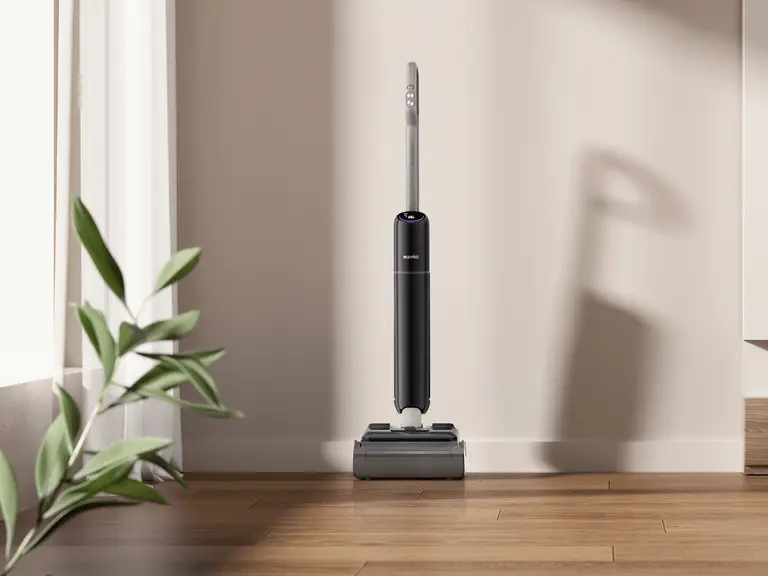
Published: Last Updated:
Readtime: 8 min
Every product is carefully selected by our editors and experts. If you buy from a link, we may earn a commission. Learn more. For more information on how we test products, click here.
You’re a good bloke. You care about your partner, want her to be happy, and you always have the best intentions. Maybe that means working hard, providing for the household, or making sure she’s looked after. There’s nothing wrong with that, is there?
But when does being “supportive” start to turn into something that’s kind of the opposite? Something that might feel caring on the outside, but underneath is more controlling than caring? That’s where the concept of ‘benevolent sexism’ sneaks in, and it’s not always easy to spot.

What is ‘Benevolent Sexism’?
Benevolent sexism is a term introduced by American social psychologists Peter Glick and Susan Fiske in 1996 as part of their ‘ambivalent sexism‘ theory, which is the idea that sexism comes in two forms: ‘hostile sexism’, which is openly negative, and ‘benevolent sexism’, which seems positive but still reinforces traditional gender roles and inequality.
As clinical psychologist and Global Director of Research at Movember Zac Seidler explained to Man of Many: “Benevolent sexism refers to seemingly positive but ultimately restrictive attitudes toward women that appear protective or appreciative but reinforce traditional gender hierarchies.”
Unlike overt forms of sexism, it seems caring (like saying “women are naturally better at caring for children”), but limits agency and casts women as less capable or independent.
Glick and Fiske found that even when these attitudes come from a good place, they still send the message that women aren’t as strong or capable as men, which just keeps traditional gender roles in place.
The Podcast that Kick-Started the Convo
Benevolent sexism isn’t new, but the uptick in discourse started with a viral clip from The Pocket with Chris Griffin, a podcast which calls itself “storytelling and education from leaders all around the world.” It’s tagged on Spotify as “health” and “self-help.”
In the podcast episode, Griffin said he’d prefer his partner not work unless she wanted to, because after a day of chasing his dreams, he wants to come home to “peace and love.” He encouraged women to go on “hot girl walks” and focus on their “feminine energy,” arguing this dynamic best supports a man’s ambitions.
The clip quickly went viral and sparked a fierce debate about gender roles. Many saw the message as harmless or even romantic, but others called it out for being traditional gender expectations repackaged as care.
One of the loudest critics was Laura Henshaw, CEO of wellness brand Kic, who said Griffin’s views were “misogyny in a bow” – harmful ideas disguised with soft music and motivational language. In her view, the podcast promoted a fantasy where men succeed while women take a backseat, all under the banner of choice.
Despite the backlash, Griffin didn’t back down on his stance. In interviews and on social media, he defended his position, telling the ABC the backlash proved society was “against biology” and unfairly criticising traditional masculinity. “Imagine wanting to work hard so you can give your partner safety and freedom of choice, just to be labelled toxic,” he said in a separate response online.
What made this conversation hit harder is that Griffin’s views aren’t fringe. Research from the e61 institute shows Gen Z men are increasingly turning toward traditional gender roles, especially in response to online masculinity content. The podcast’s popularity is part of a broader trend, one where traditional ideas about masculinity are making a comeback, dressed up in language about love and support.

When the Algorithm Keeps Serving You Sexism
Benevolent sexism isn’t only reinforced by men, however. The #TradWife and #StayAtHomeGirlfriend trends have taken off on platforms like TikTok and Instagram, with videos racking up millions of views. These videos often show young women preparing meals, organising their homes, and living financially supported lifestyles thanks to their partners.
The message is clear: this is self-care, this is “feminine energy,” and most importantly, this is a choice.
And yes, for some, it genuinely is. But as experts warn, it’s also part of a wider pattern that can reinforce outdated ideas about gender. Seidler said these trends are appealing because they’re presented in such a polished, aspirational way – but that’s exactly what makes them risky.
“While some women genuinely find fulfilment in traditional domestic roles, the concern lies in how these trends can romanticise economic dependence and present a narrow vision of femininity as aspirational,” Seidler said.
The danger, he said, is in treating this one way of living as the gold standard, rather than one option among many.
“For young people still forming their identities, these highly curated presentations can create unrealistic expectations about relationships and gender roles, potentially limiting their sense of what’s possible for their own lives.”
It doesn’t just affect women. For young men, this content can reinforce the pressure to be “the provider” or “protector” – a role that sounds noble, but can be emotionally and financially exhausting.
“It heaps on pressure about a singular (unattainable) idea of what a man should be and normalises relationship dynamics which underpin coercive control,” said Seidler.
Thanks to the algorithm, social media has become one of the easiest ways for these ideas to spread. Platforms like TikTok and Instagram are designed to keep serving you more of what you engage with, which means even casual views of this content can quickly lead to a steady stream of similar videos.
“Social media creates echo chambers that can normalise benevolent sexism more effectively than previous media,” said Seidler.
“The algorithmic nature means people encounter repeated messaging that reinforces existing beliefs, personal, authentic feel of social media content can make these messages seem more credible than traditional advertising or media”.
Because the content feels relatable and aspirational, it’s easy to absorb without questioning. But over time, it shapes what feels “normal” in relationships – and what doesn’t. While the videos might seem harmless, or even empowering, it’s worth asking: who’s benefiting when the ideal woman is always soft, supportive, and stays in her lane?

The Pressure on Men
This conversation isn’t one-sided. While traditional gender roles and benevolent sexism often limit women’s choices, the expectation that they must always be the provider carries a heavy toll for men, too.
“Benevolent sexism places significant pressure on men to fulfil protector and provider roles, which can create anxiety, stress, and feelings of inadequacy when they can’t meet these standards,” explains Seidler.
“It can limit men’s emotional expression and help-seeking behaviour, as acknowledging vulnerability contradicts the ‘strong protector’ ideal.”
These traditional roles are encouraged by “masculinity influencers” online. According to Movember’s Young Men’s Health in a Digital World report, nearly two-thirds of young men (16–25) in Australia, the UK, and the US follow these types of influencers online, many of whom reinforce the importance of self-reliance and traditional provider roles.
The report highlights that young men who engage with this content are more likely to report feelings of worthlessness, nervousness, and sadness, and are less likely to prioritise their mental health compared to their peers. Almost a quarter of Australian men say they would not seek help for mental health concerns at all.
According to 2025 research from The American Journal of Men’s Health, strong adherence to traditional masculine norms – emphasising stoicism, self-reliance, and emotional suppression – is consistently linked to higher rates of depression, anxiety, stress, and risky behaviours (like substance abuse) among men.
This combination of societal pressure and silence creates a cycle where men’s struggles go unseen and untreated, highlighting that rigid gender expectations harm everyone, not just women.

So … What’s a Good Bloke to Do?
If you’re someone who genuinely wants to support the people you care about, that’s already a solid place to start. Benevolent sexism is tricky because it often feels like you’re being respectful or protective, but sometimes even well-meaning actions can take away someone else’s freedom or voice.
As clinical psychologist Gene Efron points out, most young people want to move away from gender stereotypes and genuinely value equality. But algorithms aren’t neutral, and they will keep feeding you content that reinforces old-school ideas, without you even realising it.
“Social media can feed into deeply held unconscious beliefs,” he told Man of Many. “So it’s important that when consuming this content that people ask themselves, ‘Is this actually consistent with my values?’”
Doing regular check-ins with yourself and what you’re consuming is important, because being a good bloke doesn’t mean being in control or sticking to outdated roles. Being a good bloke means showing up with respect, openness, and a willingness to grow.
And, there are other upsides to this, too. “There is a benefit – financial, social, emotional – in expanding their ideas of what they can be,” said Seidler.
When all is said and done, no one’s pointing fingers. Most guys are doing their best. But now that you know a bit more about benevolent sexism, it’s a chance to stay curious, reflect, and think about how your actions can better match the kind of bloke you want to be.






























Comments
We love hearing from you. or to leave a comment.